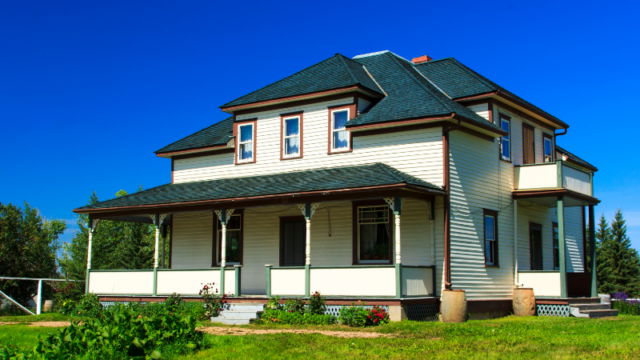Deciding what to do with an aging parent’s home is a difficult and emotional process for many families. It can be a source of stress and conflict, as well as a source of financial and practical concerns. However, it is an important decision that requires careful consideration and careful planning.
In this blog post, we will explore the various options available to families faced with the question of what to do with an aging parent’s home. We will discuss the pros and cons of each option, as well as the financial and emotional implications. We will also provide guidance on how to involve the aging parent in the decision-making process and how to navigate any potential conflicts or challenges that may arise.
Table of Contents
Ways To Deal With Aging Parent’s Home

1. Assessing the current situation
The first step in deciding what to do with an aging parent’s home is to assess the current situation. This includes determining the parent’s current living situation and evaluating the condition of the home.
If the aging parent is still living in the home, it is important to consider their wishes and preferences. Do they want to stay in the home, or do they want to move to a different living arrangement? If they want to stay in the home, is it safe and comfortable for them to do so? Are there any necessary repairs or updates that need to be made to the home in order to make it more livable?
If the aging parent is no longer living in the home, it is important to consider whether the home is being used or not. Is it being rented out or is it sitting empty? If it is being rented out, is the rental income sufficient to cover the cost of maintaining the home? If the home is not being used, is it being properly maintained and protected from potential damage or deterioration? Knowing how to care for your aging parent is important.
2. Options for the home
Once you have assessed the current situation, you can start exploring the various options available to you for the home. Some common options include selling the home, renting the home, keeping the home as a vacation or second home, or staying in the home and receiving in-home care.
3. Selling the home
Selling the home is often the most straightforward option, particularly if the aging parent is no longer living in the home and the home is not being used. It allows the family to sell the home and divide the proceeds among the heirs. However, there are a few things to consider before deciding to sell the home.
First, you will need to determine the value of the home. This can be done through a professional appraisal or by comparing the home to similar properties in the area. You will also need to consider any outstanding debts or mortgages on the home, as well as any taxes or fees that may be owed.
In addition to the financial considerations, there are also emotional implications to consider. Selling the home can be a difficult and emotional process for the aging parent and the rest of the family. It can be a reminder of the loss of a loved one and can be a difficult step to take.
4. Renting the home

Another option is to rent the home out to tenants. This can be a good way to generate income from the home and can help to cover the cost of maintaining the home. However, there are also a few things to consider before deciding to rent the home.
First, you will need to determine whether the home is in good condition and suitable for renters. If necessary, you will need to make any necessary repairs or updates to the home. You will also need to consider the location of the home and the demand for rental properties in the area.
In addition to the financial considerations, there are also emotional implications to consider. Renting out the home can be a difficult and emotional process for the aging parent and the rest of the family. It can be a reminder that the aging parent is no longer living in the home and can be a difficult adjustment.
5. Keeping the home as a vacation or second home
Another option is to keep the home as a vacation or second home. This can be a good way to keep the home in the family and maintain a connection to it. However, there are also a few things to consider before deciding to keep the home as a vacation or second home.
First, you will need to consider the location of the home and the demand for vacation rentals in the area. You will also need to consider the cost of maintaining the home, as well as any insurance or tax implications.
In addition to the financial considerations, there are also emotional implications to consider. Keeping the home as a vacation or second home can be a difficult and emotional process for the aging parent and the rest of the family. It can be a reminder that the aging parent is no longer living in the home and can be a difficult adjustment.
6. Staying in the home and receiving in-home care
If the aging parent wants to stay in the home and is still able to do so safely, another option is to stay in the home and receive in-home care. This can be a good way to allow the aging parent to maintain their independence and remain in their familiar surroundings. However, there are also a few things to consider before deciding to stay in the home and receive in-home care.
First, you will need to consider the cost of in-home care, as well as any insurance or financial assistance that may be available. You will also need to consider the availability of in-home care providers in the area and whether the home is suitable for in-home care.
In addition to the financial considerations, there are also emotional implications to consider. Staying in the home and receiving in-home care can be a difficult and emotional process for the aging parent and the rest of the family. It can be a reminder of the aging parent’s declining health and can be a difficult adjustment. Things like incontinence, immobility and other aging ailments are hard to watch in our once very active parent.
Considerations for each option
When deciding what to do with an aging parent’s home, it is important to consider the financial implications of each option. This includes the cost of maintaining the home, as well as any outstanding debts or mortgages. It is also important to consider the emotional impact on the aging parent and the rest of the family.
In addition to the financial and emotional considerations, it is also important to consider the practicality and feasibility of each option. This includes factors such as the location of the home, the demand for rental properties or vacation rentals in the area, and the availability of in-home care providers.
1. Making a decision
Making a decision about what to do with an aging parent’s home is never easy. It requires careful consideration of the various options and their implications. It is important to involve the aging parent in the decision-making process as much as possible, as their wishes and preferences should be taken into account.
To help make a decision, it can be helpful to seek the advice of professionals, such as a financial advisor or real estate agent. These professionals can provide valuable guidance on the financial and practical aspects of the decision.
It is also important to be open to reassessing the situation and making changes if necessary. As the aging parent’s needs and circumstances change, the decision about what to do with their home may also need to change.
Implementation and follow-up
Once a decision has been made about what to do with the aging parent’s home, it is important to take steps to implement the chosen option. This may involve hiring a real estate agent to sell the home, finding tenants to rent the home, or arranging for in-home care services.
It is also important to regularly check in on the aging parent and their living situation. This can help to ensure that their needs are being met and that they are comfortable and safe in their home.
Conclusion
Deciding what to do with an aging parent’s home is a difficult and emotional process for many families. It requires careful consideration of the various options and their implications, as well as the involvement of the aging parent in the decision-making process. Helping your parents to live their best life in their senior years is important.
By weighing the pros and cons of each option, seeking the advice of professionals, and being open to reassessing the situation, families can make a decision that is best for their loved one and for themselves.
Regardless of the decision that is made, it is important to remember that the most important thing is the well-being and happiness of the aging parent. By keeping their needs and preferences at the forefront, families can ensure that their loved one is well cared for and comfortable in their home.
